A Nonlinear Method for Characterizing Discrete Defects in Thick Multilayer Composites
Abstract
1. Introduction
2. Methodology
3. Experiment
3.1. Material and Test Set-Up
3.2. Test Method
4. Results and Discussion
4.1. Recurrence Analysis of Defect-Free Areas
4.2. Recurrence Analysis of Defect Areas
5. Conclusions
Author Contributions
Funding
Acknowledgments
Conflicts of Interest
References
- Cawley, P.; Adams, R.D. Defect types and non-destructive testing techniques for composites and bonded joints. Mater. Sci. Technol. 1989, 5, 413–425. [Google Scholar] [CrossRef]
- Scott, I.G.; Scala, C.M. A review of non-destructive testing of composite materials. NDT Int. 1982, 15, 75–86. [Google Scholar] [CrossRef]
- Ibrahim, M.E. Nondestructive evaluation of thick-section composites and sandwich structures: A review. Compos. Part A 2014, 64, 36–48. [Google Scholar] [CrossRef]
- Li, C.; Pain, D.; Wilcox, P.D. Imaging composite material using ultrasonic arrays. NDT E Int. 2013, 53, 8–17. [Google Scholar] [CrossRef]
- Ibrahim, M.E.; Smith, R.A.; Wang, C.H. Ultrasonic detection and sizing of compressed cracks in glass-and carbon-fibre reinforced plastic composites. NDT E Int. 2017, 92, 111–121. [Google Scholar] [CrossRef]
- Smith, R.A.; Nelson, L.J.; Mienczakowski, M.J. Automated analysis and advanced defect characterisation from ultrasonic scans of composites. Insight Non-Destruct. Test. Cond. Monit. 2009, 51, 82–87. [Google Scholar] [CrossRef]
- Wang, L.; Rokhlin, S.I. Ultrasonic wave interaction with multidirectional composites: Modeling and experiment. J. Acoust. Soc. Am. 2003, 114, 2582. [Google Scholar] [CrossRef] [PubMed]
- Dominguez, N.; Mascarot, B. Ultrasonic Non-destructive inspection of localized porosity in composite materials. In Proceedings of the Ninth European Conference on Non-Destructive Testing (ECNDT), Berlin, Germany, 25–29 September 2006. [Google Scholar]
- Demirli, R.; Saniie, J. Model-based estimation of ultrasonic echoes. Part I: Analysis and algorithms. IEEE Trans. Ultrason. Ferroelectr. Freq. Control 2001, 48, 787–802. [Google Scholar] [CrossRef] [PubMed]
- Demirli, R.; Saniie, J. Model-based estimation of ultrasonic echoes. Part II: Nondestructive evaluation applications. IEEE Trans. Ultrason. Ferroelectr. Freq. Control 2001, 48, 803–811. [Google Scholar] [CrossRef] [PubMed]
- Hagglund, F.; Martinsson, J.; Carlson, J.E. Model-based estimation of thin multi-layered media using ultrasonic measurements. IEEE Trans. Ultrason. Ferroelectr. Freq. Control 2009, 56, 1689–1702. [Google Scholar] [CrossRef] [PubMed]
- Marwan, N.; Riley, M.; Giuliani, A. Translational Recurrences: From Mathematical Theory to Real-World Applications; Springer Publishing Company Incorporated: New York, NY, USA, 2014. [Google Scholar]
- Webber, C.; Marwan, N. Recurrence Quantification Analysis-Theory and Best Practices; Springer: Berlin, Germany, 2015. [Google Scholar] [CrossRef]
- Carrión, A.; Genovés, V.; Gosálbez, J.; Miralles, R.; Payá, J. Ultrasonic signal modality: A novel approach for concrete damage evaluation. Cem. Concr. Res. 2017, 101, 25–32. [Google Scholar] [CrossRef]
- Carrión, A.; Miralles, R.; Lara, G. Measuring predictability in ultrasonic signals: An application to scattering material characterization. Ultrasonics 2014, 54, 1904–1911. [Google Scholar] [CrossRef] [PubMed]
- Brandt, C.; Maaß, P. Recurrence Quantification Analysis for Non-Destructive Evaluation with an Application in Aeronautic Industry. In Proceedings of the 19th World Conference on Non-Destructive Testing, Munich, Germany, 13–17 June 2016. [Google Scholar]
- Brandt, C. Recurrence quantification analysis as an approach for ultrasonic testing of porous carbon fibre reinforced polymers. In Recurrence Plots and Their Quantifications: Expanding Horizons; Springer International Publishing: Cham, Switzerland, 2016. [Google Scholar] [CrossRef]
- Kantz, H.; Schreiber, T. Nonlinear Time Series Analysis; Cambridge University Press: Cambridge, UK, 2003. [Google Scholar] [CrossRef]
- Takens, F. Detecting strange attractors in turbulence. Lect. Notes Math. 1981, 898, 366–381. [Google Scholar] [CrossRef]
- Marwan, N.; Romano, M.C.; Thiel, M. Recurrence plots for the analysis of complex systems. Phys. Rep. 2007, 438, 237–329. [Google Scholar] [CrossRef]
- Eckmann, J.P.; Kamphorst, S.O.; Ruelle, D. Recurrence plots of dynamical systems. Europhys. Lett. 2007, 4, 973–977. [Google Scholar] [CrossRef]
- Hobbs, B.; Ord, A. Nonlinear dynamical analysis of GNSS data: Quantification, precursors and synchronisation. Prog. Earth Planet. Sci. 2018, 5, 36. [Google Scholar] [CrossRef]
- Zbilut, J.P.; Thomasson, N.; Webber, C.L. Recurrence quantification analysis as a tool for nonlinear exploration of nonstationary cardiac signals. Med. Eng. Phys. 2002, 24, 53–60. [Google Scholar] [CrossRef]
- Marwan, N. How to avoid potential pitfalls in recurrence plot based data analysis. Int. J. Bifurc. Chaos 2011, 21, 1003–1017. [Google Scholar] [CrossRef]


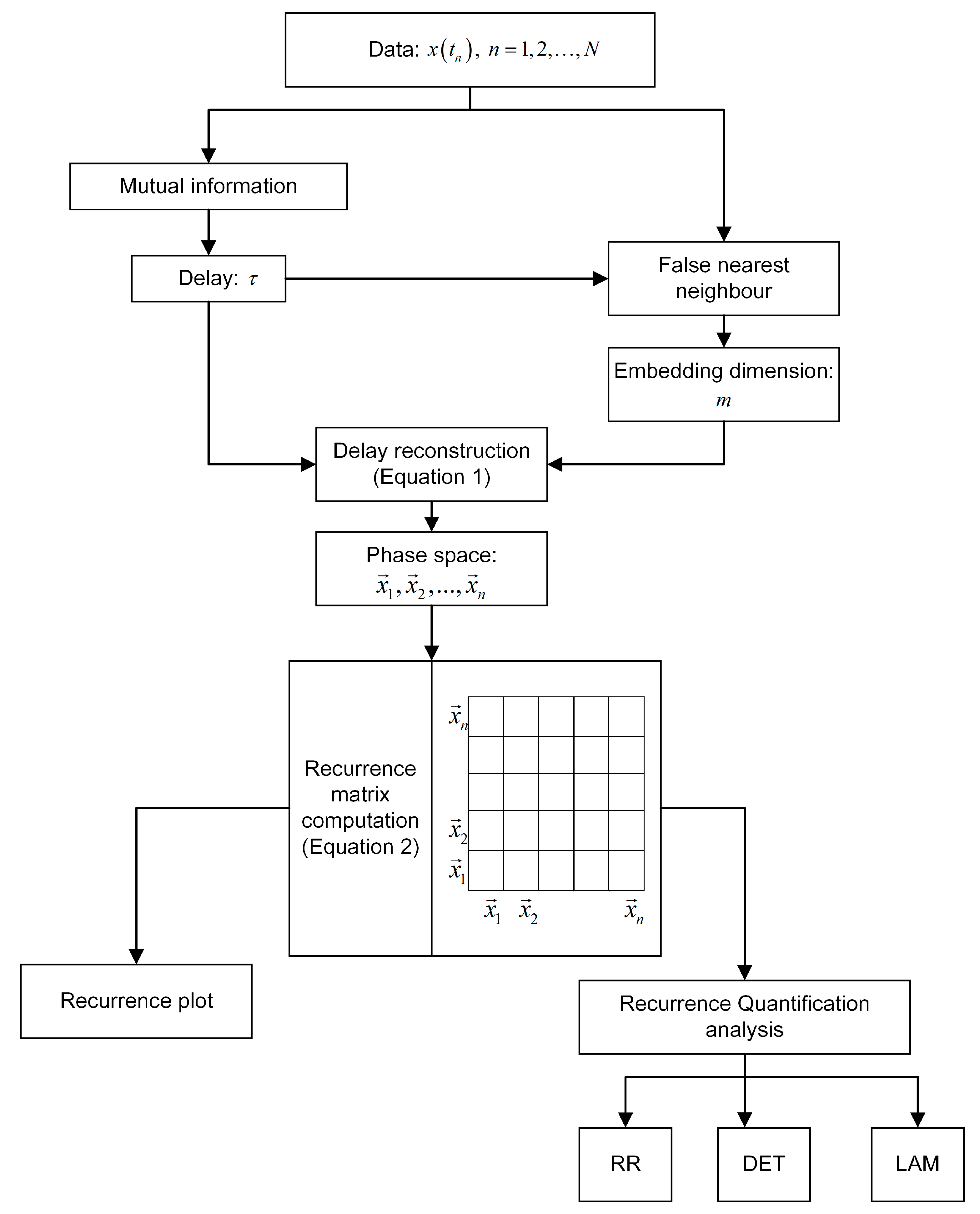
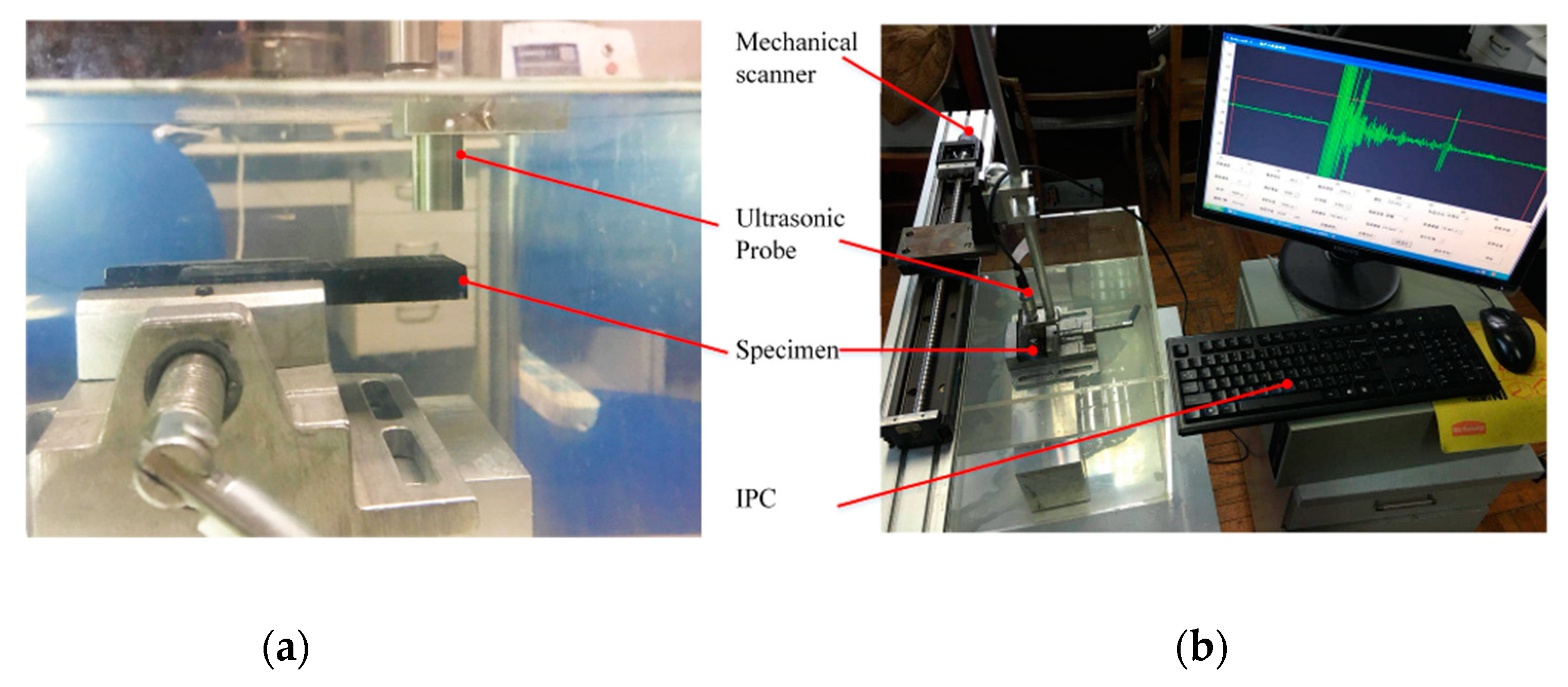
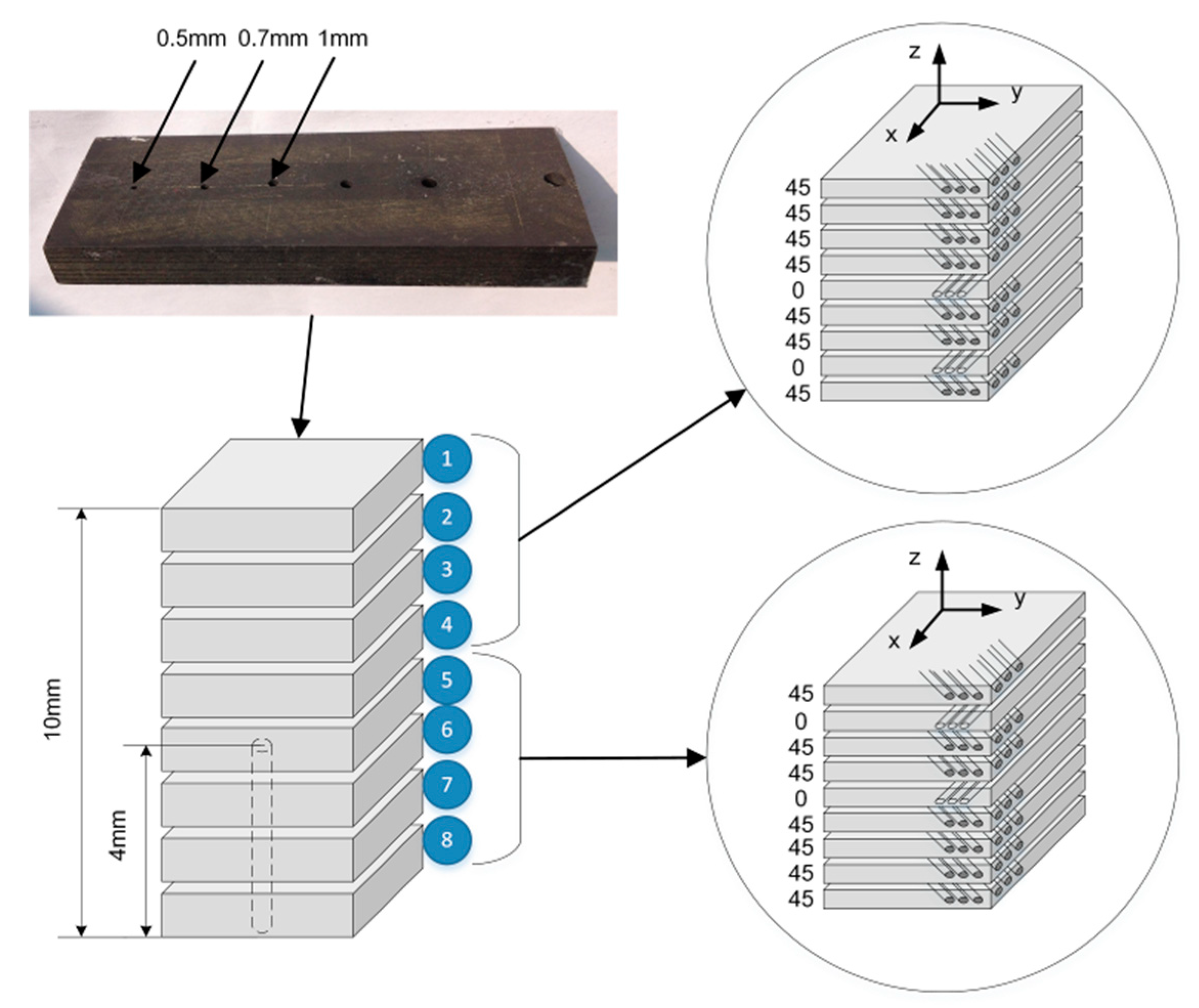
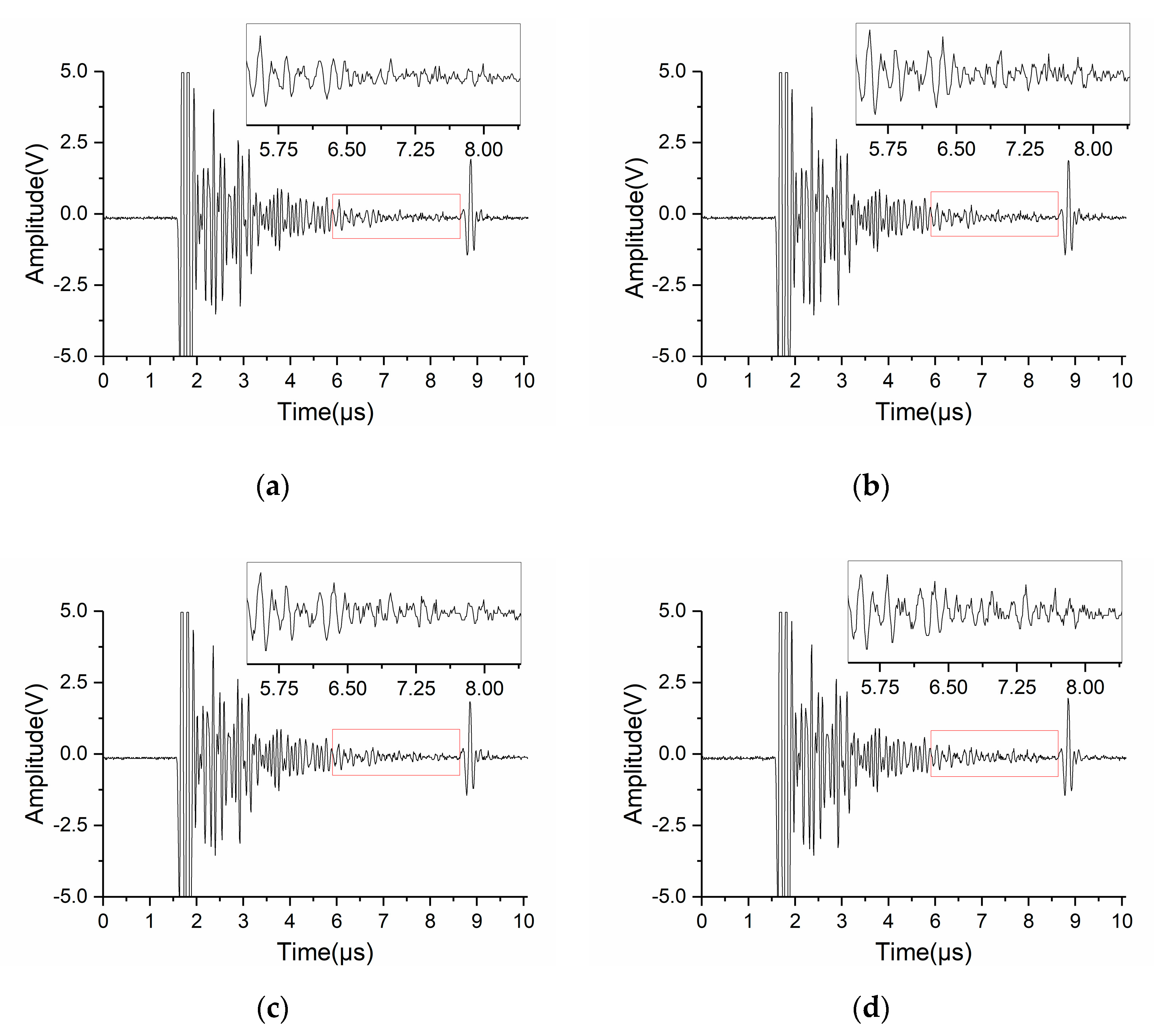

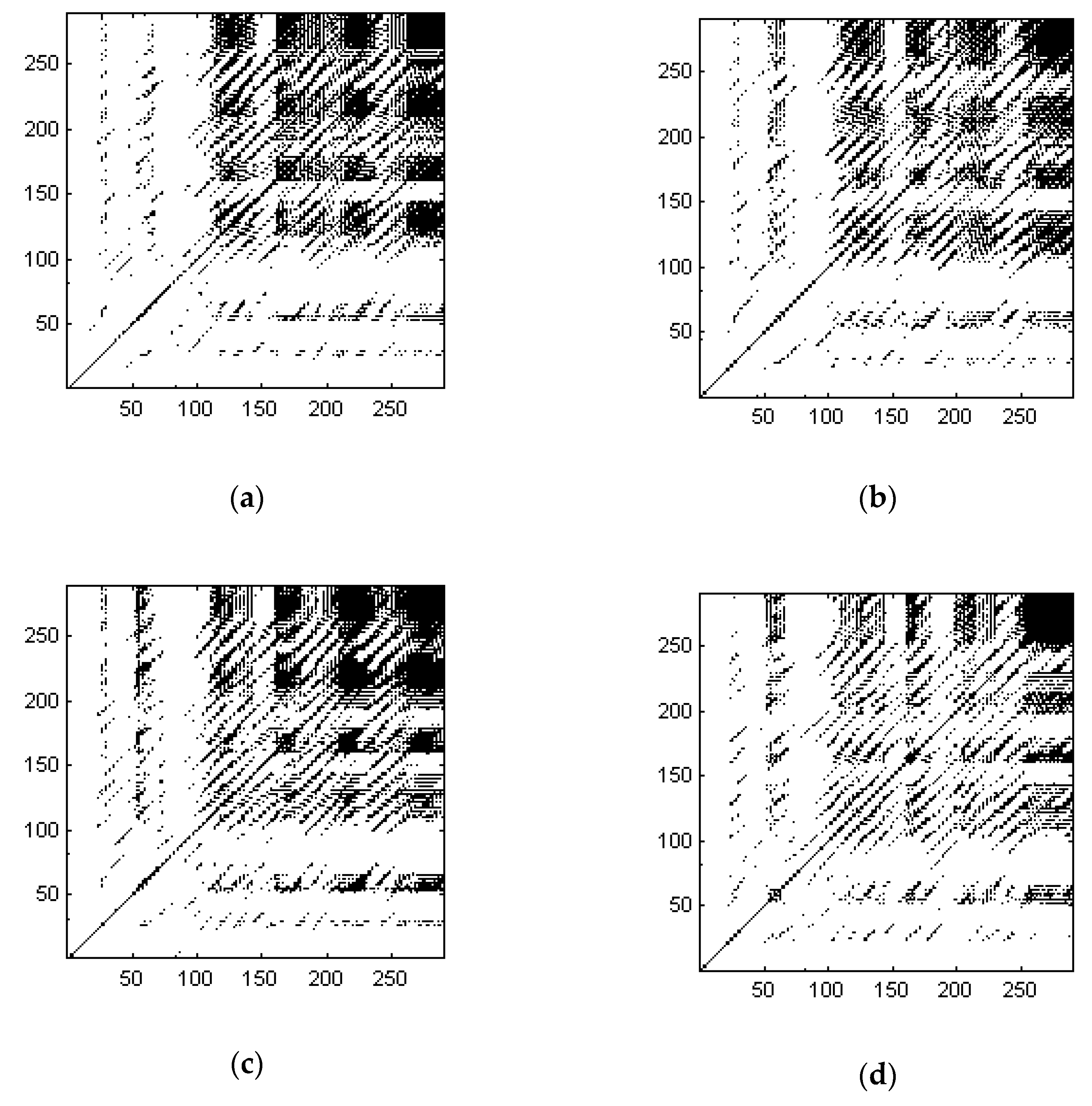
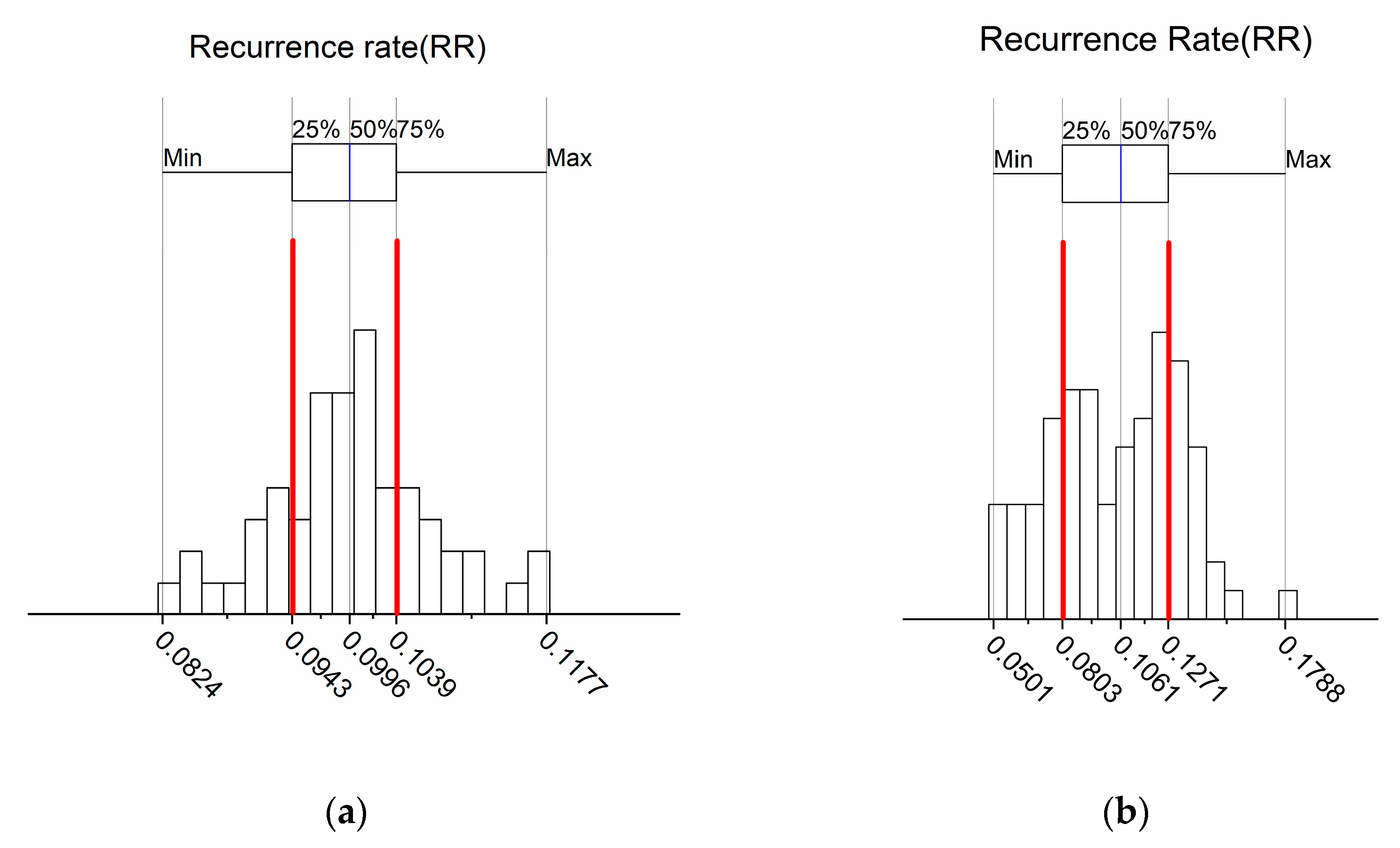
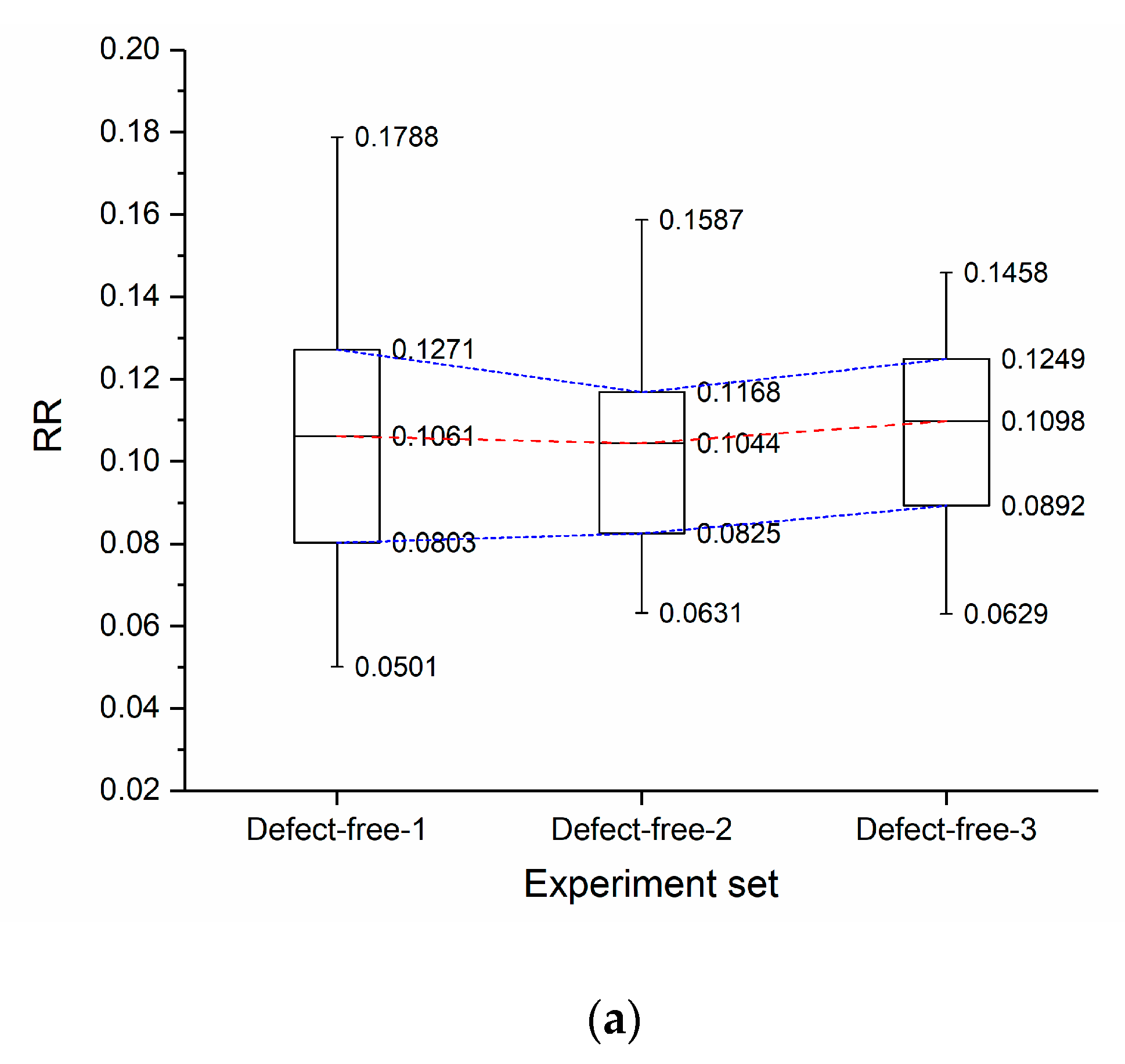
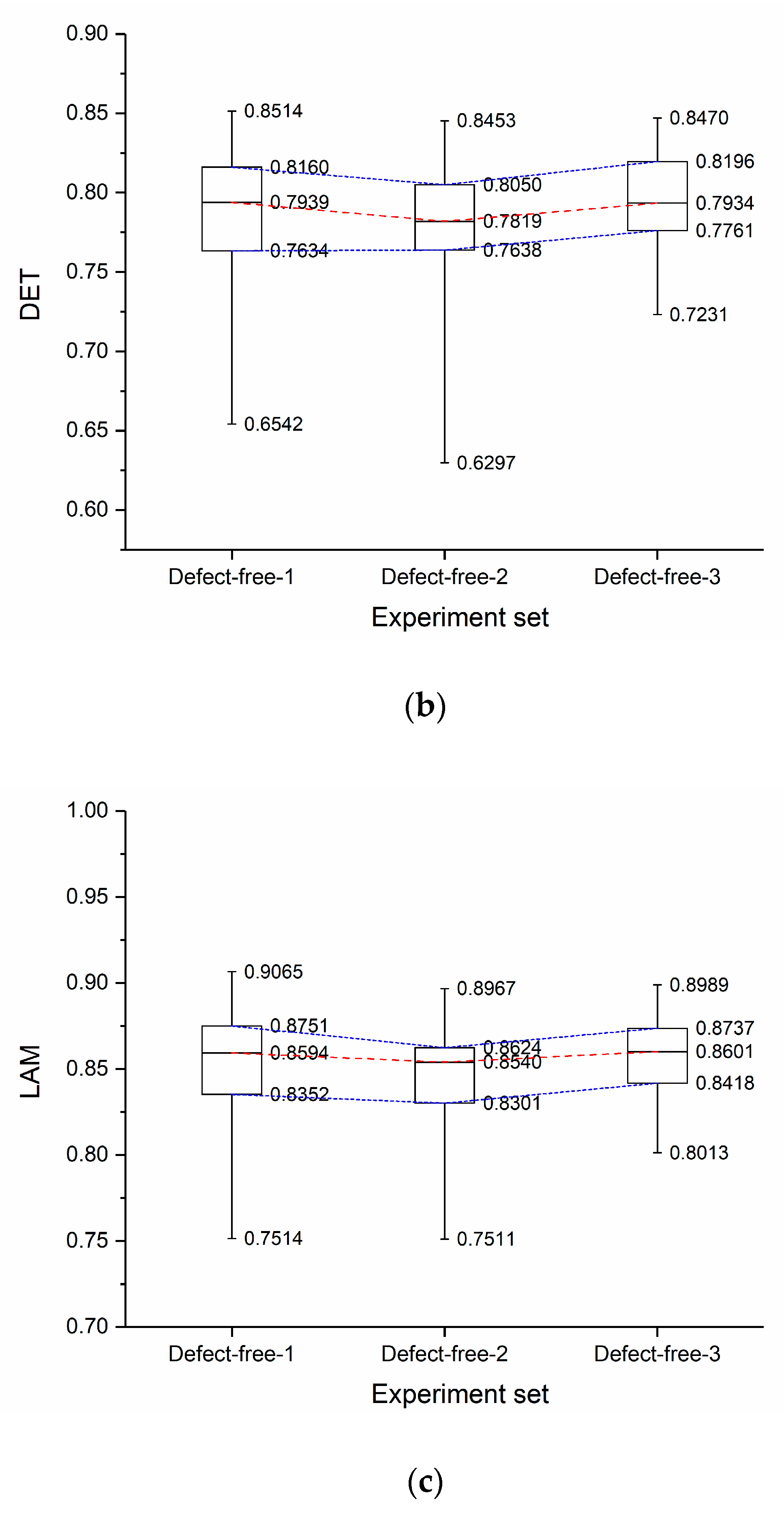

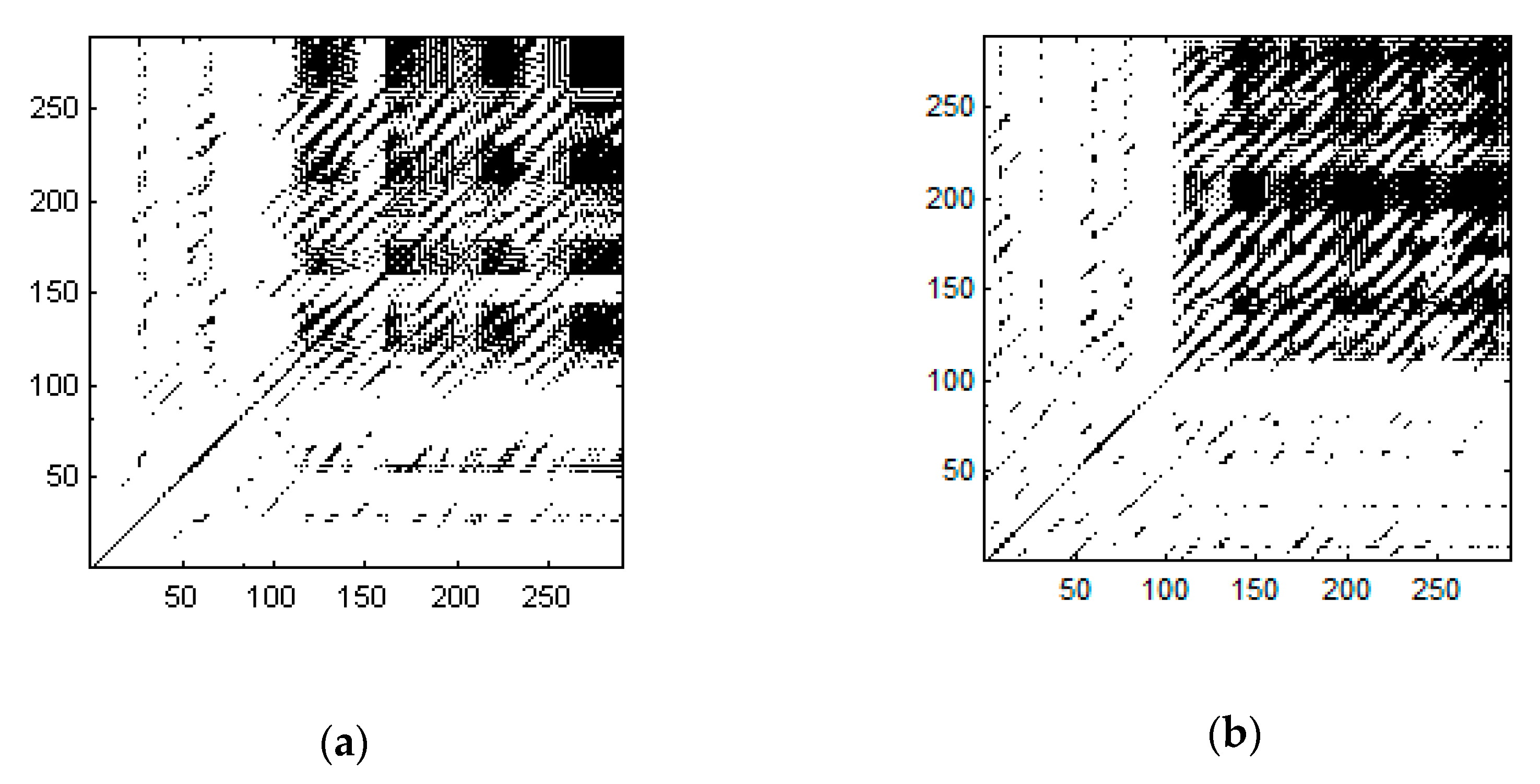
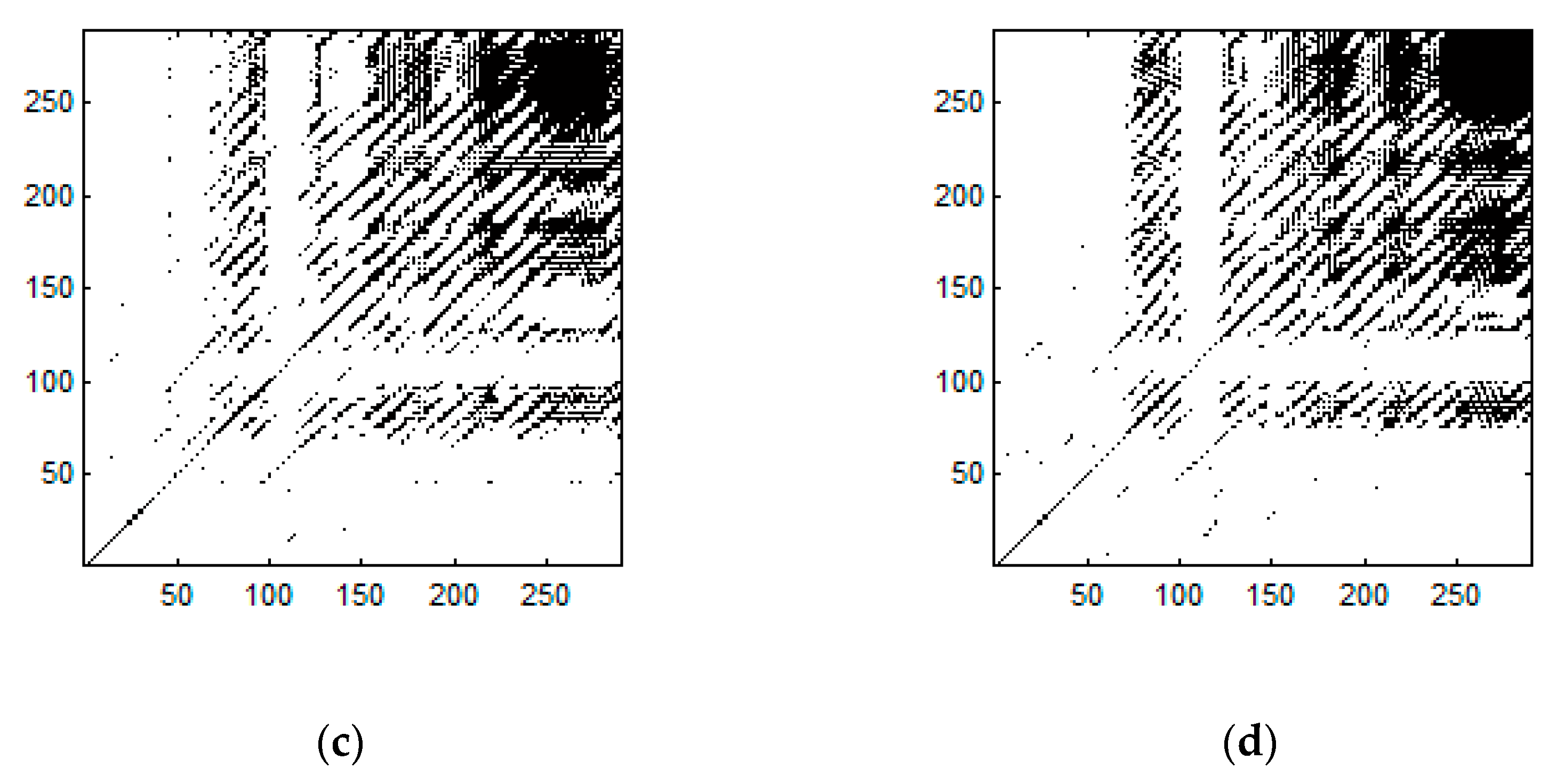
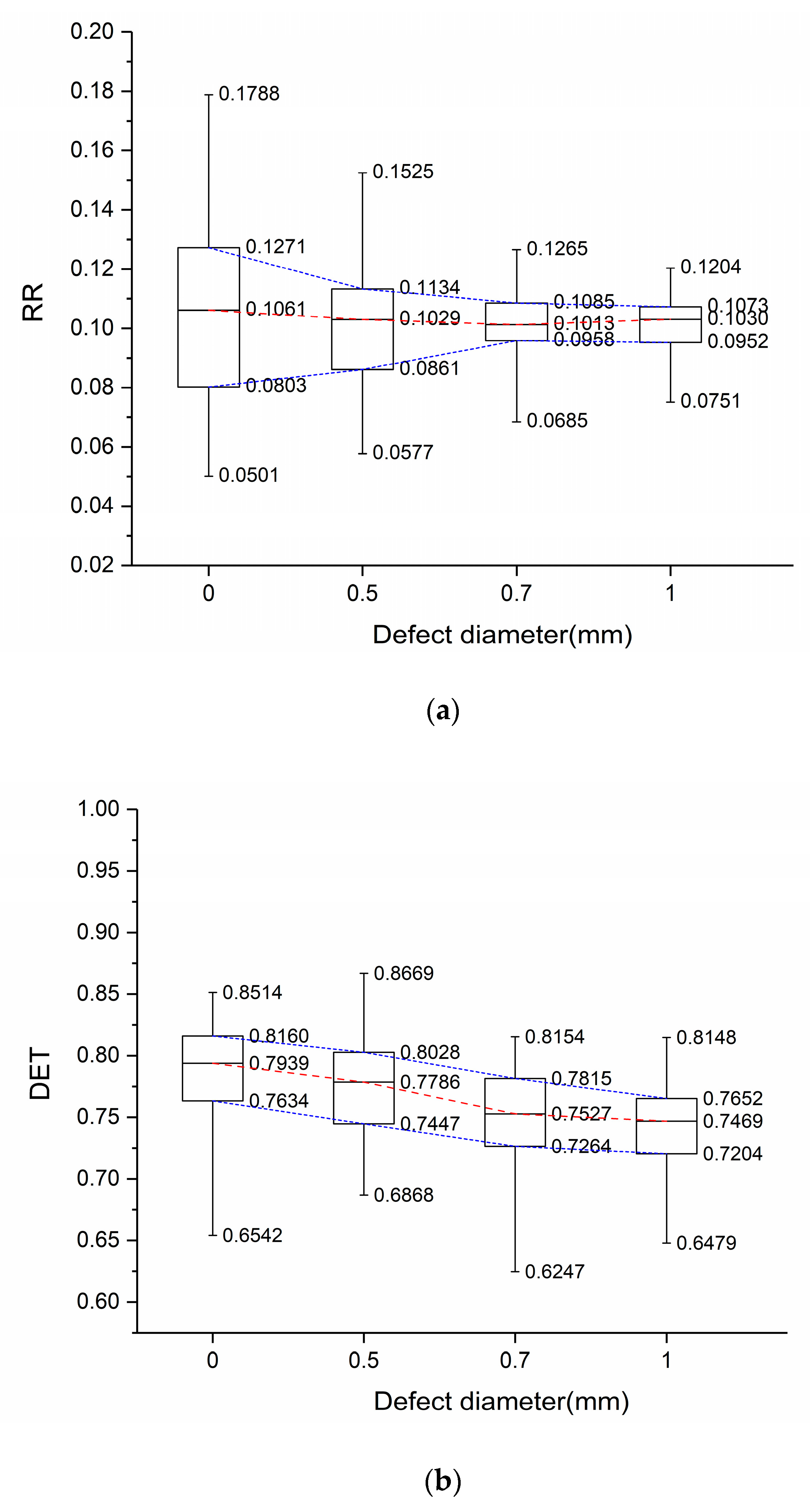
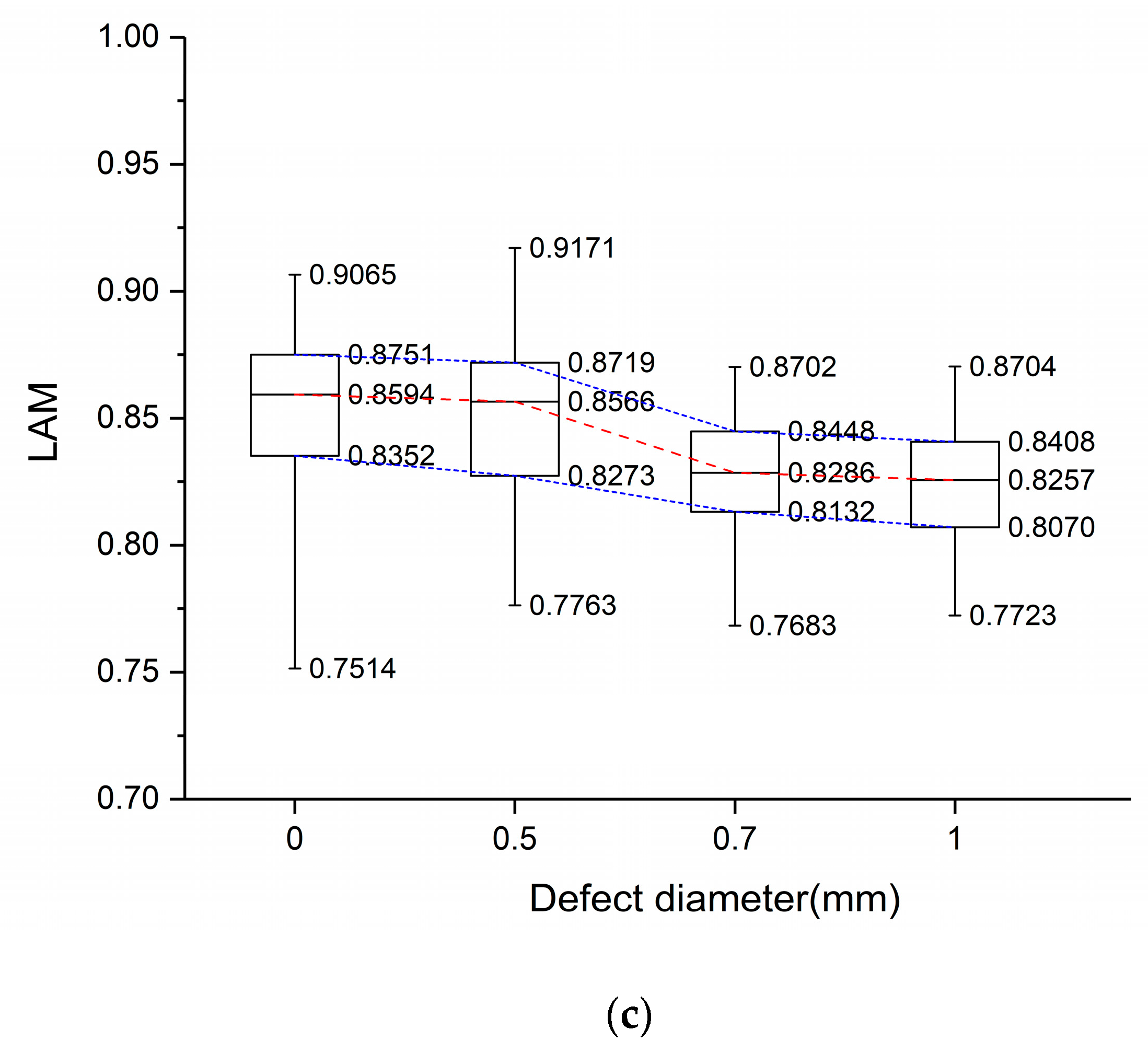
| Experiment Set | Defect Diameter (mm) | Test Times |
|---|---|---|
| Defect-free-1 | 0 | 100 |
| Defect-free-2 | 0 | 100 |
| Defect-free-3 | 0 | 100 |
| Defective-1 | 0.5 | 100 |
| Defective-2 | 0.7 | 100 |
| Defective-3 | 1 | 100 |
© 2019 by the authors. Licensee MDPI, Basel, Switzerland. This article is an open access article distributed under the terms and conditions of the Creative Commons Attribution (CC BY) license (http://creativecommons.org/licenses/by/4.0/).
Share and Cite
Teng, G.; Zhou, X.; Yang, C.; Zeng, X. A Nonlinear Method for Characterizing Discrete Defects in Thick Multilayer Composites. Appl. Sci. 2019, 9, 1183. https://doi.org/10.3390/app9061183
Teng G, Zhou X, Yang C, Zeng X. A Nonlinear Method for Characterizing Discrete Defects in Thick Multilayer Composites. Applied Sciences. 2019; 9(6):1183. https://doi.org/10.3390/app9061183
Chicago/Turabian StyleTeng, Guoyang, Xiaojun Zhou, Chenlong Yang, and Xiang Zeng. 2019. "A Nonlinear Method for Characterizing Discrete Defects in Thick Multilayer Composites" Applied Sciences 9, no. 6: 1183. https://doi.org/10.3390/app9061183
APA StyleTeng, G., Zhou, X., Yang, C., & Zeng, X. (2019). A Nonlinear Method for Characterizing Discrete Defects in Thick Multilayer Composites. Applied Sciences, 9(6), 1183. https://doi.org/10.3390/app9061183





